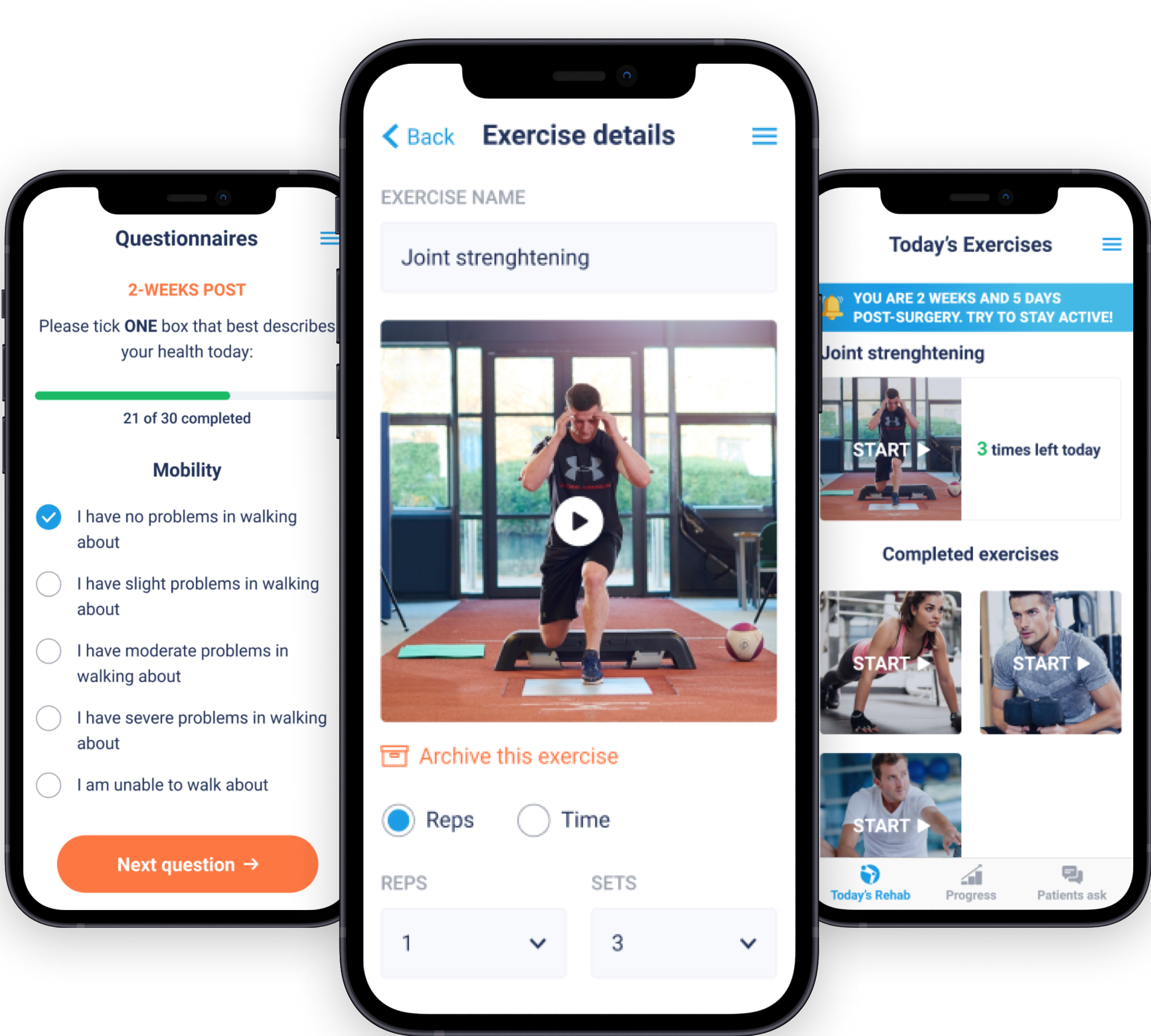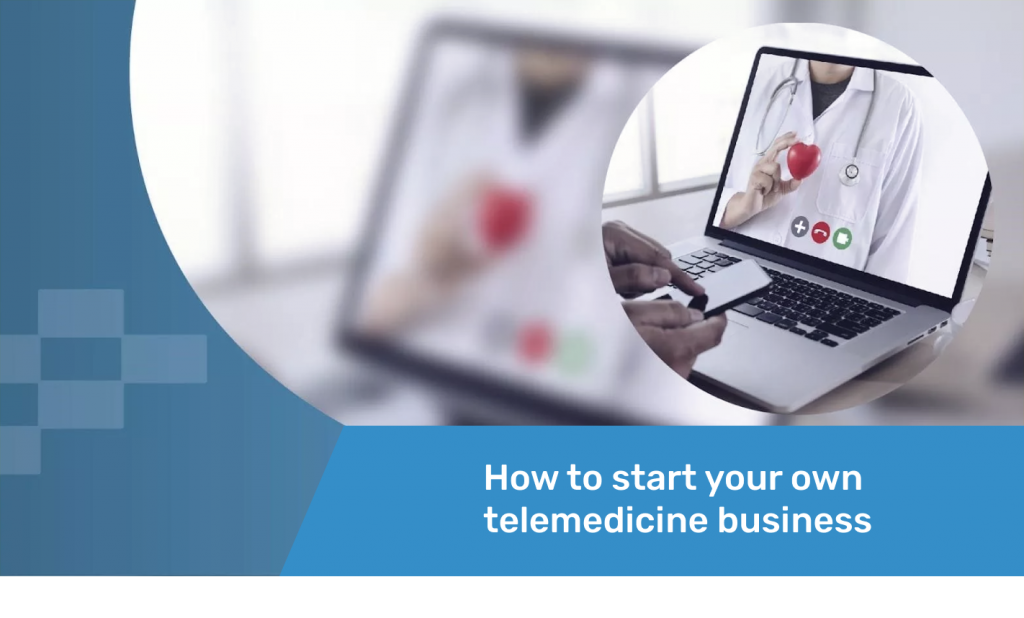In this article, we will share some thoughts on how to establish a telemedicine system, and try to foresee its costs and equipment needed.
Being a revolutionary area in the healthcare business, telemedicine is steadily growing the number of its users worldwide. In The United States, for example, in 2021 they were more than 76 million, which is 29% of the population. According to Insider Intelligence, by 2025 the number is expected to reach above 104 million users or 39% of the population.
Telemedicine is the culture of using technology for upgrading on-site care and running medical care remotely. It exists in many forms, that is why telemedicine equipment is different depending on the type – real-time or store-and-forward.
Most of us know real-time telemedicine quite well as we are all more or less familiar with video conferencing. It is the live session between a doctor and his patient, where the last one is in the comfort of his home.
As for the store-and-forward type, it reminds audio messaging in some way. It makes it possible for doctor-patient communication to be asynchronous. Trustworthy messengers are used to sharing and storing medical data.
How to start telemedicine. The start-up costs
Being profitable in terms of revenue, a telemedicine business certainly needs a considerable investment at the beginning. Savings are ideal for that but the most common practice remains business loans. Industry experts say the cost usually varies around 500 USD a month, though there are free platforms available. Apart from expenses on medical technology, software, hardware, training staff costs should not be forgotten as well as packaging, shipping, etc.

Following the regulations
First of all, every start-up project has to be compliant with the rules, a deep investigation, and a financial base. The legal foundation of telemedicine programs topic is the best way to initiate.
It is great to get to know what is covered by Medicare at the early stage. After the COVID-19 pandemic, Medicare pays for virtual doctor-patient visits. It doesn’t mean telemedicine services are meant not for physicians only. Patients can book a telemedicine appointment with a psychologist, nurse, or even a pharmacist or social worker.
Studying the telemedicine laws and making lists of allowed and forbidden things in your state is important. Use official resources like the American Telemedicine Association’s website. The nuances are decisive and they vary flom state to state. While a doctor can contact his patient virtually in one state with no problems, other states’ rules demand that the patient should be located nowhere but a medical institution for such a virtual visit. Get acquainted with e-prescribing guidelines as they are different from state to state. DEA’s restrictions on the use of controlled substances have become less strict recently, by the way. Your software telemedicine compliance is all about constant monitoring!
Find out how we developed a physical therapy telemedicine application, while taking into account HIPAA, GDPR, PIPEDA and PCI regulations, more about this in our client’s case below.
This solution has several advantages over other similar applications as it uses the most modern technologies in the field of telemedicine such as personalization: notifications, questionnaires, tracking progress, individual exercise plan, offline use possibility, patients communicate with doctors in chat (Telehealth feature,) HIPAA & GDPR compliant solution, ability to check chart analysis and other data about patient progress, two types of user-profiles for doctors and patients. Also, it is in compliance with HIPAA, GDPR, PIPEDA, PCI information security requirements.
Physical Therapy Software App

Requisites
Though telemedicine is associated with virtual care, its equipment is a great help even when patients and doctors actually meet in one space of a medical institution.
In hospitals, telemedicine carts are widely used to equip staff with mobility in recording and sharing patients’ medical data and consulting with other doctors online. A good telemedicine cart usually comes equipped with computers, monitors, keyboards, high-definition cameras, and various mobile medical devices, that will create a feeling of presence during virtual doctor-patient meetings. Pneumatic height adjustment is a great bonus as well as flexible handles to move the cart easily.
Telemedicine practice is great when doctors want to see how the patients are more often without an actual visit. The devices can record and share patient data safely and in high quality.
Medical institutions are also adopting educational technology like patient assessment terminals (PAT) or interactive patient engagement entities for more effective streamlined workflows. It may be a permanent wall-mount, a tablet, or a TV put near a patient’s bed. Special software can consult patients about their state of health and recovery process as well as some help in non-clinical connected needs. Among the other must-haves when starting a telemedicine project are a retinal camera, vital sign monitor, spirometer, etc.
For doctors and caregivers who monitor patients in a non-clinical setting, like the patient’s home, there are telemedicine kits that look like a modern upgraded physician’s bag, and normally have a tablet or laptop, ECG/EKG and blood pressure monitors, digital compact scope, and stethoscope, a pulse oximeter, and even portable ultrasound.
Talking about the top software, the most reliable have proven to be Zoom, WeCouncel, Doxy.me, vSee, eVisit, etc.
All in all, it is truly vital what telemedicine devices can provide in healthcare workflow. To reinforce your business, you need a more detailed vision of the types of telemedicine equipment that will work for you. The choice primarily depends on the things you want to accomplish, but luckily it can work together to be of use in multiple cases.
Nice telemedicine crew – good outcomes
Hight quality care delivery depends on a professional and devoted telemedicine team. The following experts and their skills will make your telemedicine business effective, self-sufficient and complete: IT and clinical team representatives, and inventory manager. The IT man is responsible for technology, the hardware and software, in particular, its good functioning and data safety. He also educates the staff on how to use telemedicine devices properly. The clinical team guy takes care of monitoring the patient’s state of health and planning the treatment process. The inventory manager is responsible for finances and all the other equipment apart from those under the IT representative’s maintenance.

Guidelines on how to buy telemedicine equipment
Questions about how to start a telemedicine business usually come together with how to buy the right telemedicine equipment. We made a little research on the key points to consider.
Functions go first. What you need in your practice will define the choice. Here the computers might be similar but the software for data processing will certainly differ, as well as medical devices.
Your telemedicine equipment should be easy to use both for staff and patients. You should make your own opinion about this before purchasing. User-friendly equipment is effective and safe from mistakes in the hands of telemedicine team members. In the case of patients, they just will not use it if it is difficult to understand. The intuitive usage design will work great saving time and effort.
The cost plays a significant role. Telemedicine equipment is not cheap and sometimes it costs thousands of dollars. Plus telemedicine software, professional maintenance, and staff training. Some of the expenses will be continuous, but most of the budget is for implementation only. That should keep you optimistic and focus on revenues when the time comes.
Portability is also important as well as software compatibility for obvious reasons. Make sure that you understand all setup guidelines and ask the Medtech experts about the training that is necessary to use this equipment. The company should also guarantee maintenance and support services. It is better to talk over the details about future policies right away.
Telemedicine is what enables doctor-patient communication via digital technology. This is how diagnoses are made and treatment provided in our modern pandemic reality. The future tends to embrace both in-office appointments and visits online. If you’re interested in becoming a part of this cool healthcare system, we offer our hand in it! Our team will lead your business to success as a telemedicine provider. Contact us today!






